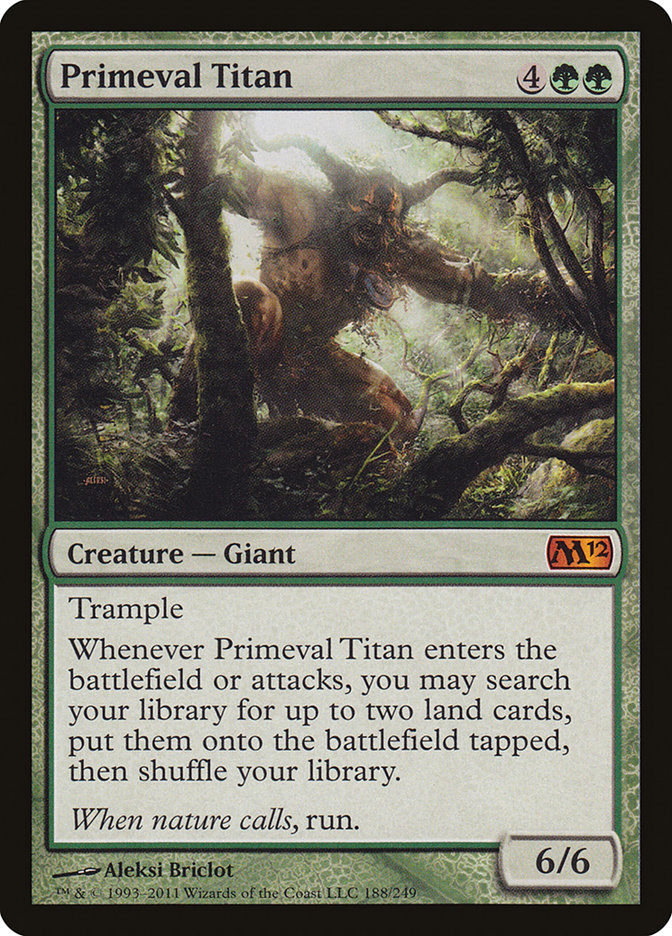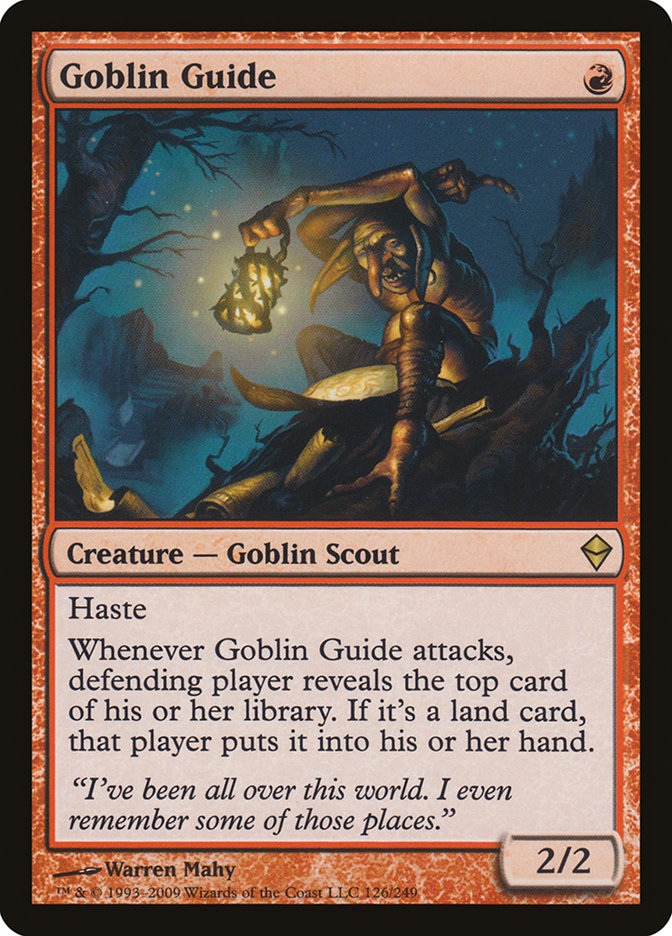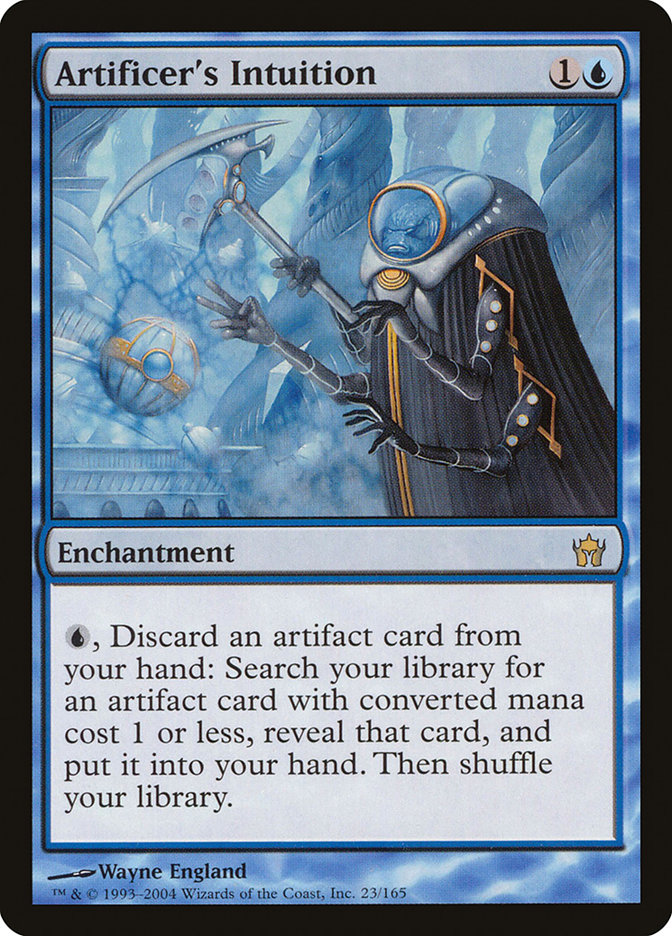Once upon a time, people wanted Wizards of the Coast to ban the card Vengevine in Legacy.
That sentence? Not a joke. People wanted to ban a four-mana haste 4/3 from Legacy the format.
This obviously didn’t happen. Wizards of the Coast banned Survival of the Fittest, a card that was dominating Legacy, and Vengevine disappeared from the format the next day. It was a lesson for many about the fundamental attribution error; many people looked at the games they lost, saw four attacking Vengevines on turn 3, and concluded that the card Vengevine was too strong and needed to be removed from the game. They failed to note that the only reason those Vengevines were there is because Survival of the Fittest had moved them from deck to hand to graveyard to play and that cards that move other cards from zone to zone for very low costs (a single green mana in Survival’s case) tend to be more powerful than four-power attackers.
A similar discussion tends to happen with almost any prospective ban—a population of people identify the card that literally defeats them (Griselbrand; Emrakul, the Aeons Torn; Omniscience), not the card that enables that game state (Show and Tell usually).
This article isn’t going to be a polemic on banning enablers as opposed to situationally broken cards, so I won’t linger on the subject. I do want to give one more history lesson on Vengevine, though, in order to place it in a proper context.
After Vengevine tore up Legacy for the tail end of 2010, people’s expectations were high for its Standard lifetime. By and large, however, it was overshadowed by three cards:
These three cards represented the pillars of the Caw-Blade format. Stoneforge Mystic (and faithful companions Jace, the Mind Sculptor and Squadron Hawk) were the bad guys, Primeval Titan (and faithful companion Valakut, the Molten Pinnacle) was also the bad guy, and Goblin Guide was basically the only good guy in the room. The thing is that Vengevine was supposed to be really good against the small white creature deck with a bunch of planeswalkers. Like, if you think of a deck that Vengevine is good against, it has small creatures, cards with sorcery speed effects, and counters that get beat by Vengevine’s trigger. That’s Caw-Blade in a nutshell. So why didn’t Vengevine do well?
Basically, this guy. This scumbag had a tendency to show up on turn 4 or 5, attack the next turn, and end the game pretty fast. Primeval Titan was the Battle of Wits of the format, and Vengevine decks had no great way to interact with it. As a result the format’s axis rested on Stoneforge Mystic and Jace, the Mind Sculptor versus Primeval Titan, and we all know how that one ended.
I bring up these history lessons to make two points:
First, Vengevine as a strategy is very soft to combo decks. It’s a graveyard combo deck that doesn’t outright kill people. It’s a board-centric value deck that has to play a lot of creatures to fulfill Vengevine’s trigger, making it naturally weak to combo decks that prey on creature-heavy attack decks.
Second, Vengevine used to be very good. It was good when it had Survival of the Fittest and opponents didn’t have Abrupt Decay, Deathrite Shaman, Batterskull, or True-Name Nemesis. The game has changed almost exclusively in ways that are really bad for Vengevine. Vengevine decks thrive when their opponent is on the back foot—it’s a lot harder to mount a comeback when your big finish is a pair of hasty 4/3s as opposed to, say, a 4/4 vigilance lifelinker that rebuys using mana as opposed to creature spells.
We must always ask what we’re trying to beat. In Legacy, your targets are:
- Delver tempo decks
- "Fair" creature decks
- Miracles
- True-Name Nemesis midrange decks
- Graveyard combo decks
- Show and Tell combo decks
- Random miscellaneous brews
If you’re not beating most of those, your idea is likely fatally flawed, probably because its power level is very low. For instance, when you look at those six macro archetypes, where is Vengevine naturally good? Where is it naturally bad?
I see Vengevine decks being generically good against Delver decks, as Vengevine’s trigger is set up to beat counterspells and Lightning Bolt. Problematically, the dominant Delver deck right now is also a Stoneforge Mystic / True-Name Nemesis midrange deck that Vengevine is awful against. Batterskull plus Stoneforge Mystic is tough to beat. True-Name Nemesis is hard to beat unless you can swarm around it. Rest in Peace is a gigantic kicking. Even Swords to Plowshares is good value.
When you start looking at Deathblade, a macro archetype that looks and acts a lot like Caw-Blade, things get worse, not better, for Vengevine. The addition of Deathrite Shaman is terrible for Vengevine, as it lets Deathblade control the game and grind the Vengevine player down to their "enabler" creatures, the Noble Hierarch and Deathrite Shaman that are there to trigger Vengevine’s resurrection. Once that happens, Umezawa’s Jitte or Batterskull can mop up.
I would be fascinated to see how Vengevine stacks up against Mother of Runes and Serra Avenger or Goblin Lackey and Gempalm Incinerator, but my impression is that decks with green one-drops have never been that great against fair creature decks without some sort of over the top finish, whether it’s a reanimation effect or a Natural Order or something else that puts a huge board-defining creature into play. Vengevine decks are terribly prone to getting swarmed by decks with smaller cheaper creatures that produce card advantage.
I don’t think anyone wants to play Vengevine against Terminus.
I don’t think I need to tell you how Vengevine is likely to match up against Show and Tell, Reanimate, or Dark Ritual. It’s not going to be pretty.
So we’ve established that this deck isn’t going to tear up SCG Opens any time soon. With that caveat out of the way, what’s the wildest thing we can do with the card?
Let’s start with a historical example:
Creatures (26)
- 4 Birds of Paradise
- 1 Triskelion
- 1 Quirion Ranger
- 1 Basking Rootwalla
- 1 Phyrexian Devourer
- 4 Tarmogoyf
- 3 Noble Hierarch
- 3 Bloodghast
- 3 Vengevine
- 4 Fauna Shaman
- 1 Necrotic Ooze
Lands (19)
Spells (15)
Sideboard

Once upon a time, master brewer Ken Adams missed Survival of the Fittest + Vengevine, so this deck was born. It’s due for an update given that it predates Deathrite Shaman and Abrupt Decay. A very straightforward update would swap out Bloodghast for Abrupt Decay, Noble Hierarch and Birds of Paradise for Deathrite Shaman, and two Forests for the tenth and eleventh fetch lands. That leaves us with:
Creatures (23)
- 3 Birds of Paradise
- 1 Triskelion
- 1 Quirion Ranger
- 1 Basking Rootwalla
- 1 Phyrexian Devourer
- 4 Tarmogoyf
- 3 Vengevine
- 4 Fauna Shaman
- 1 Necrotic Ooze
- 4 Deathrite Shaman
Lands (19)
Spells (18)
Sideboard

This is a pretty sweet Fauna Shaman / Buried Alive deck from about 30 months ago. The deck has two game plans.
Plan A is to cast Buried Alive for Triskelion, Phyrexian Devourer, and Necrotic Ooze and then Reanimate the Necrotic Ooze. Using Devourer and Triskelion in tandem with one another, you remove cards from your library and counters from Necrotic Ooze to deal your opponent lethal damage.
There is one caveat to this however; if you remove a card with converted mana cost three or greater, don’t let the ability resolve. Since part of resolving the Phyrexian Devourer’s counter-adding ability is sacrifice if the creature’s power is greater than seven, you don’t want to let three counters go on your 4/3 Necrotic Ooze. So you pay the cost, see the card, and respond to it with more activations, eventually killing your opponent with that activation (and possibly some others) on the stack. Simple!
Plan B is to Buried Alive or Fauna Shaman for Vengevine and beat them up. Simple!
Plan C is to beat them down with Tarmogoyf backed up with Deathrite Shaman, Thoughtseize, and Abrupt Decay. Simple!
If they’re interested in boarding in a bunch of Rest in Peace or are playing Deathrite Shaman, you have Natural Order and Dark Confidant to juke them. If they have Emrakul, the Aeons Torn, you have Fauna Shaman and Big Game Hunter. Pretty straightforward transformation, you know?
As much as I would love to show you a Psychatog + Vengevine deck, the two cards don’t go particularly well together. Psychatog wants a lot of cheap spells to fill up your graveyard (although it will accept dredgers), while Vengevine wants a lot of cheap creatures to cast and trigger its ability. Unfortunately the crossover is too narrow, and all of the decks I came up with were Dredge-a-Tog decks that could never actually return a Vengevine ever. In lieu of that, I’d like to introduce you to the second half of my article, which you may be able to guess the topic of from the title.
~~~
Once upon a time, Second Sunrise got banned in Modern. I understood why they did it, but I still wasn’t happy about it. Eggs was the only graveyard combo deck that was almost entirely impervious to Deathrite Shaman, and I have a soft spot for decks that beat hate cards aimed squarely at their demographic. I’m a sucker for an underdog story, all right?
Eggs, for those of you who joined Modern relatively recently, refers to a combo deck based around a lot of inexpensive artifacts that cycle—Chromatic Star, Chromatic Sphere, Conjurer’s Bauble, and so on—and either Second Sunrise or Faith’s Reward to return all of them. Second Sunrise got banned because the deck takes forever to actually win a game.
I want to make this deck in Legacy. I’m convinced that it can be done. There are three basic things going on with an Eggs deck:
- Ways to get lands out of your deck, which important since you’re cantripping through a lot of your deck to find more artifact cantrips
- Ways to cantrip through your deck, aka "your engine"
- Ways to return all of your artifacts
Here is my first cut at the deck:
Lands (18)
Spells (42)

Yeah, we went really deep here. So what’s going on with this deck?
First off, this version of Eggs makes use of Artificer’s Intuition, a Survival of the Fittest for "cogs," which can be best defined as "any card that can be found by Trinket Mage." What is Artificer’s Intuition doing in here and why should you care?
Artificer’s Intuition smooths the deck out. It sets up a balanced range of artifacts with which to go off, and it tutors for an enormous ritual (Zuran Orb in conjunction with Second Sunrise is basically Early Harvest). Plus it lets you convert excess mana and cards for more Stars, Spheres, and Baubles. Since you don’t want to draw more than one Intuition and don’t want to draw a Lion’s Eye Diamond early, both cards are only two-ofs, although I’d be interested in arguments for more or fewer of either.
A huge portion of the deck is taken straight from Stanislav Cifka’s winning deck from Pro Tour Return to Ravnica—the cantrips are straight upgrades (although Preordain may actually be better than Brainstorm), the artifact core is the same, the white spells are the same, and the win condition is the same.
The two copies of Deep Analysis are there as a sort of insurance policy against Lion’s Eye Diamond’s downside. Once you activate LED, you’re hand poor (and presumably board rich), so Deep Analysis can let you refuel.
Ultimately, Lion’s Eye Diamond may prove to have more downside than this deck is willing to tolerate, in which case Reshape and Lotus Bloom should reenter the discussion. I’m very interested in Zuran Orb plus Sunrise/Reward regardless of whether LED makes the cut, but I don’t know where to look for a better mana engine in this deck. I’m positive that there’s something better than Reshape and Lotus Bloom in Legacy—I just don’t know what.
There are a lot of weird things going on with this deck—the maindeck Grafdigger’s Cage and Pithing Needle provide a decent amount of interaction with a very invasive format—but this deck is going to struggle against Force of Will and other faster combo decks. It’s unlikely to go off before turn 4, whereas plenty of decks can go off as early as turn 1. When you’re not playing Force of Will, being slower than an opposing combo deck isn’t where you want to be.
Again, if you’re in the market for trolling your opponents with a ponderous combo deck and playing awesome but weird cards like Zuran Orb and Artificer’s Intuition, this is your jam. I wouldn’t advise entering a Legacy Open with the deck as is though. If you feel like you can improve it, please hit me up on Facebook or Twitter. I want this deck to be good so badly.
It’s more than likely that Eggs as a sort of Modern Storm style "go off with mana spells and draw spells and hope to get there" deck is a worse version of the following deck, which Pseudo-Storm devotee Muellermilch played on Magic Online for a few months around the end of 2012 to a good amount of Legacy Daily Event success:
Lands (13)
Spells (47)

The two decks—Eggs and Pseudo-Storm—have the same basic goal of chaining together cards that generate resource advantages or mana, eventually culminating in an overwhelming victory. Eggs plays a bunch of artifacts to achieve this goal, while Pseudo-Storm plays draw spells and rituals. Since Dark Ritual is quite a bit more powerful than Chromatic Star, it’s fairly likely that the latter deck is better than my Eggs brew, but I’ll never stop having a soft spot for Artificer’s Intuition.
As much as I wish the Eggs deck were ready for prime time, it just isn’t there yet. I’ll be tweaking and battling with the Vengevine deck on video later this week, and if you all want some hot and heavy Artificer’s Intuition action in later weeks, you can let me know right at the bottom of this page. The Eggs angle is entirely optional, as I’m more than willing to go full tilt on something like Auriok Salvagers or Trinket Mage plus Jace, the Mind Sculptor. Seriously, you do not have to sell me very hard on "play a blue card that tutors for a bunch of things."
For those of you who wish I would get back to talking about real decks, don’t worry. Next week is all about SCG Invitational preparation. So lighten up, sound off, and I’ll see you later this week!




